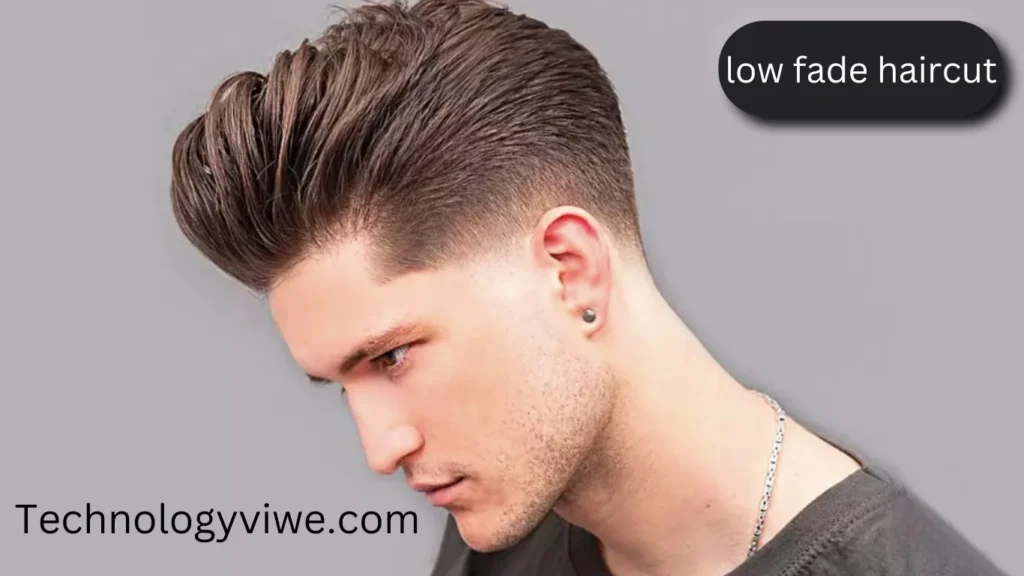
Are you looking for a trendy and stylish haircut that combines sophistication with a touch of edginess? Look no further than the low fade haircut.
Introduction
The low fade haircut is a timeless and versatile hairstyle that has gained immense popularity in recent years. Characterized by a gradual tapering of hair length from the temples down to the nape of the neck, this haircut is a favorite among men of all ages and hair types. Whether you are looking for a classic, clean-cut appearance or a modern, edgy look, the low fade can be customized to suit your personal style.
Historical Context
Origins of the Fade Haircut
The fade haircut, including its low fade variation, has roots tracing back to the military. It was initially popularized by soldiers during the mid-20th century due to its practicality and low maintenance. Over time, the fade haircut transitioned from military bases to mainstream barbershops, becoming a staple in men’s grooming.
Evolution Over the Decades
From the 1950s to the present, the fade haircut has evolved significantly. In the 1980s and 1990s, hip-hop culture brought the fade into the limelight, with artists like Will Smith and Tupac Shakur sporting various fade styles. Today, the low fade is embraced by a diverse range of people, making it a universally appealing hairstyle.
Types and Categories
Classic Low Fade
The classic low fade features a subtle taper starting just above the ears, providing a clean and professional look. It is ideal for those who prefer a conservative yet stylish appearance.
Low Skin Fade
For a bolder look, the low skin fade involves tapering the hair down to the skin at the base. This variation creates a striking contrast between the longer hair on top and the shaved sides.
Low Drop Fade
The low drop fade follows the natural curvature of the head, creating a drop effect behind the ears. This style is perfect for adding a modern twist to the traditional fade.
Low Burst Fade
The low burst fade tapers the hair in a circular pattern around the ears, giving a burst effect. This style is popular among those who want a unique and edgy haircut.
Key Principles
Gradual Tapering
The essence of the low fade haircut lies in its gradual tapering. The hair transitions smoothly from longer lengths at the top to shorter lengths at the bottom, creating a harmonious blend.
Blending Techniques
Achieving a flawless low fade requires expert blending techniques. Barbers use clippers with different guard sizes to ensure a seamless transition between hair lengths.
Versatility
One of the key principles of the low fade is its versatility. It can be paired with various hairstyles on top, from pompadours to quiffs, making it adaptable to different preferences.
Methodologies and Tools
Clippers and Guards
High-quality clippers and a range of guards are essential tools for creating a low fade. These tools allow barbers to achieve precise lengths and blends.
Scissors and Comb
In addition to clippers, barbers use scissors and a comb for detailing and refining the haircut. These tools help in achieving sharp lines and a polished finish.
Styling Products
To maintain and style a low fade haircut, products like pomade, gel, and hair spray are often used. These products add texture, hold, and shine to the hair.
Personal Stories or Case Studies
Case Study: Transforming Styles with a Low Fade
John, a 30-year-old professional, switched from a simple buzz cut to a low fade. This change not only updated his look but also boosted his confidence in professional settings. His story highlights how a low fade can enhance one’s appearance and self-esteem.
Real-Life Experiences
Many individuals have shared their positive experiences with low fade haircuts on social media platforms. From celebrities to everyday people, the low fade has proven to be a go-to style for a fresh and modern look.
Expert Insights
Barber Recommendations
Professional barbers recommend the low fade for its adaptability and ease of maintenance. According to Master Barber Tony Smith, “The low fade is an excellent choice for anyone looking to keep their hair neat and stylish with minimal effort.”
Styling Tips
Experts advise using light styling products to keep the hair in place without weighing it down. Regular trims are also recommended to maintain the sharpness of the fade.
Challenges and Solutions
Maintaining the Fade
One of the challenges of a low fade is maintaining its sharpness. Regular visits to the barber are essential to keep the fade looking fresh.
DIY Fades
While it’s possible to attempt a low fade at home, achieving a professional look requires skill and practice. It is often best to leave this hairstyle to experienced barbers.
Future Trends
Innovations in Barbering
With advancements in barbering techniques and tools, the low fade is expected to continue evolving. New blending methods and clipper technologies will likely enhance the precision and style of this haircut.
Emerging Styles
Emerging styles such as the textured low fade and the curly low fade are gaining popularity. These variations incorporate natural hair textures, adding a modern twist to the traditional low fade.
Conclusion
The low fade haircut is a versatile and timeless choice that suits various hair types and personal styles. Its gradual tapering and seamless blending make it a favorite among both barbers and clients. Whether you prefer a classic, clean look or a bold, modern style, the low fade offers endless possibilities. Embrace this stylish haircut and experience the confidence boost it brings.